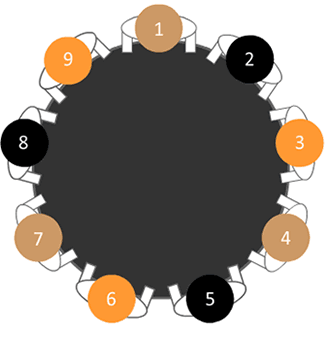Team members
A team is more than a set of individuals with the appropriate skills. People bring to the team not only their knowledge and skills but also their personal attributes and the ways in which they behave, contribute and relate to others. A popular idea is that these individual characteristics should be taken account of in constructing teams. While we may not be in a position to select team members, according to Belbin, we need to consider these behaviours when selecting a team. A person who is known to be confident and enthusiastic is likely to behave in the same way when he or she joins a team. If all team members behave in the same way, then not only is conflict likely but the quality of the task is likely to suffer.

Employees sitting round a table
By ensuring a balance of behaviours or 'roles' there is a greater likelihood that the team will perform well. Belbin's research (1981; 2003) (developed and slightly amended over the years) identifies nine clusters of behaviours, or roles. He suggests that individuals will be more effective if they are allowed to play the roles they are most skilled in or most inclined to play, although they can adopt roles other than their preferred ones, if necessary.
The weaknesses of Belbin's framework are that people's behaviour and interpersonal styles are influenced by context: that is, the other people in the team, the relationship with them and by the task to be performed. Moreover, research into the validity of Belbin's nine roles has shown that some are not easily distinguishable from one another and that the roles fit more easily into the more conventional framework of personality traits (Fisher et al., 2001).
However, Belbin's framework has been very influential on organisational and managerial thinking about team building and development (although it is not the only one). Such frameworks are helpful in guiding the composition of a balanced team. When, as a manager, you have no control over the composition of a team it is important to discuss with team members their strengths and weaknesses and preferred working styles.
Research into the differences between successful and unsuccessful teams highlights the importance of having a mix of people with different ways of behaving. It is the combination of different roles within a team that seems a crucial factor in its success. A team benefits from the differences rather than the similarities between people.
A successful team blends these different roles together so that the strengths of one compensate for the weaknesses of the other.
What emerges is that teams do have a vital role to play within organisations, however the problems associated with team working should not be underestimated. And we will look at this next.





